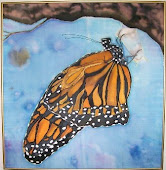
content="Word.Document">
According to Chinese tradition, the history of silk begins in the 27th century BCE. Its use was confined to China until the Silk Road opened at some point during the latter half of the first millennium BC. China maintained its virtual monopoly over silk for another thousand years. Not confined to clothing, silk was also used for a number of other applications, including writing, and the colour of silk worn was an important indicator of social class during the Tang Dynasty.
Silk cultivation spread to Japan in around 300 CE, and by 522 the Byzantines managed to obtain silkworm eggs and were able to begin silkworm cultivation. The Arabs also began to manufacture silk during this same time. As a result of the spread of sericulture, Chinese silk exports became less important, although they still maintained dominance over the luxury silk market. The Crusades brought silk production to Western Europe, in particular to many Italian states, which saw an economic boom exporting silk to the rest of Europe. Changes in manufacturing techniques also began to take place during the Middle Ages, with devices such as the spinning wheel first appearing. During the 16th century France joined Italy in developing a successful silk trade, though the efforts of most other nations to develop a silk industry of their own were unsuccessful.
The Industrial Revolution changed much of Europe’s silk industry. Due to innovations in spinning cotton, it became much cheaper to manufacture and therefore caused more expensive silk production to become less mainstream. New weaving technologies, however, increased the efficiency of production. Among these was the Jacquard loom, a precursor to modern computers, developed for silk embroidery. An epidemic of several silkworm diseases caused production to fall, especially in France, where the industry never recovered. In the 20th century Japan and China regained their earlier role in silk production, and China is now once again the world’s largest producer of silk. The rise of new fabrics such as nylon reduced the prevalence of silk throughout the world, and silk is now once again a somewhat rare luxury good, much less important than in its heyday.














No comments:
Post a Comment